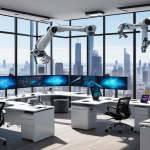The Top 20 Artificial Intelligence Technologies

In today’s fast-paced world, artificial intelligence (AI) is no longer just a futuristic concept; it’s a reality that is reshaping industries and enhancing our daily lives. From healthcare to finance, AI technologies are driving innovation and efficiency. This article explores the most influential AI technologies that are making waves today, examining their capabilities, applications, and potential future developments in the field of AI.
The landscape of AI is vast and varied. Here’s a quick look at the top 20 technologies that are at the forefront of this digital revolution:
| Technology | Key Applications | Future Potential |
|---|---|---|
| Machine Learning | Recommendation engines, predictive analytics | More personalized user experiences |
| Natural Language Processing | Chatbots, sentiment analysis | Improved human-computer interaction |
| Computer Vision | Facial recognition, medical imaging | Enhanced security and diagnostics |
| Robotics | Manufacturing, surgical robots | Automation of complex tasks |
Each of these technologies plays a crucial role in the AI ecosystem. For instance, Machine Learning acts like a sponge, soaking up data and learning from it to improve over time. Can you imagine a world where your devices understand your preferences better than you do? That’s the power of AI!
As we dive deeper into this article, we will explore each technology in detail, revealing how they work and the incredible impact they have on our lives. So, buckle up and get ready to discover the top 20 artificial intelligence technologies that are paving the way for a smarter future!
To summarize, the future of AI technologies promises advancements across various fields, with ongoing innovations likely to reshape industries, enhance human capabilities, and address global challenges. Are you ready to embrace this AI-driven future?
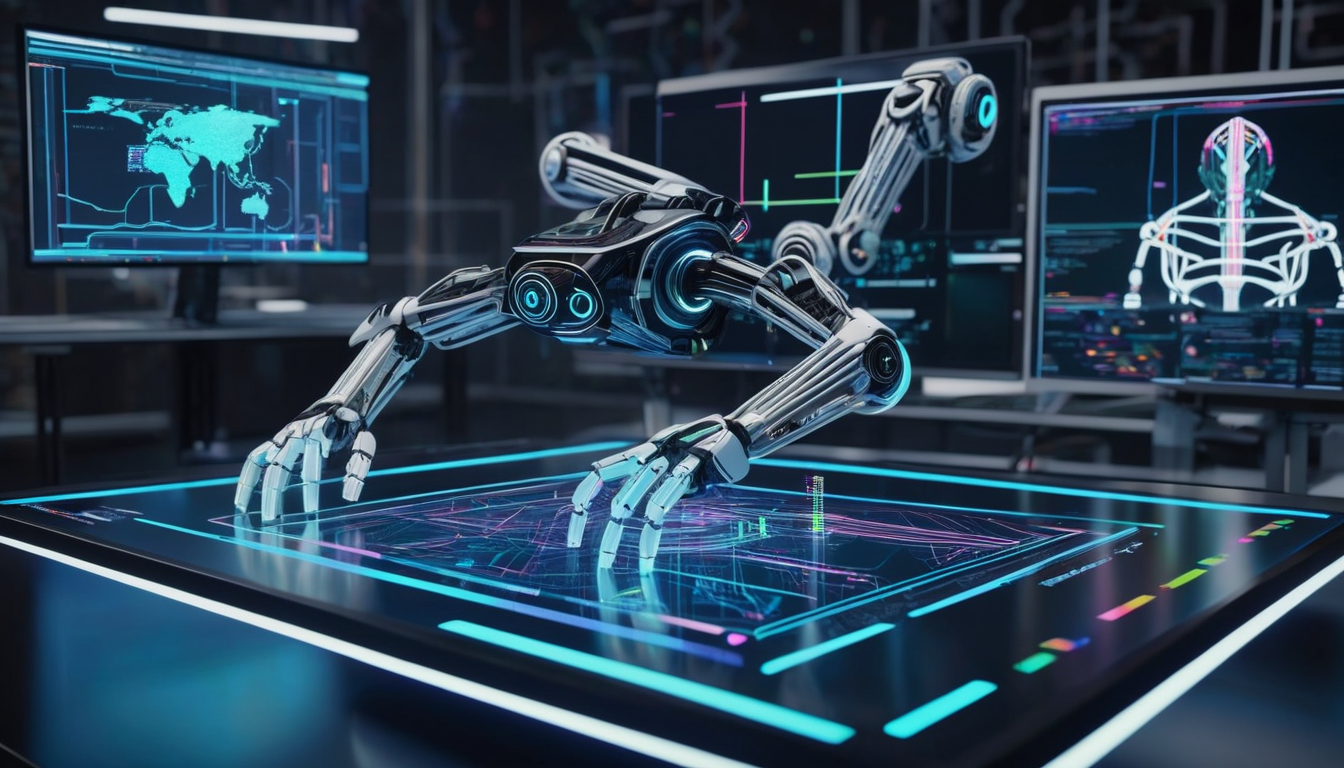
1. Machine Learning
Machine learning is at the heart of artificial intelligence, acting as the engine that drives many modern applications. Imagine teaching a child to recognize different animals; you show them pictures and name each one until they learn to identify them independently. Similarly, machine learning algorithms learn from data, improving their performance over time without being explicitly programmed to do so.
This technology is not just a buzzword; it powers a plethora of applications that touch our daily lives. From recommendation engines on streaming platforms to predictive analytics in businesses, machine learning has become an indispensable tool. Here are some key areas where machine learning shines:
- Recommendation Systems: Think Netflix or Amazon, where algorithms suggest movies or products based on your past behavior.
- Predictive Maintenance: Industries use machine learning to predict equipment failures before they happen, saving costs and time.
- Fraud Detection: Financial institutions leverage machine learning to identify unusual patterns that may indicate fraudulent activities.
To illustrate the impact of machine learning, consider the following table that highlights its applications across various sectors:
| Industry | Application | Benefits |
|---|---|---|
| Healthcare | Predictive Analytics | Improved patient outcomes and reduced costs |
| Retail | Customer Personalization | Enhanced customer experience and increased sales |
| Finance | Risk Management | Better decision-making and fraud prevention |
As we continue to harness the power of machine learning, it’s crucial to remember that the technology is only as good as the data it learns from. The quality of data directly influences the accuracy of predictions and decisions made by these systems. In the world of AI, data is the new oil, fueling innovations and breakthroughs.
In conclusion, machine learning is not just a technological advancement; it’s a transformative force reshaping industries. As we look to the future, the potential applications are limitless, making it an exciting field to watch. So, are you ready to embrace the machine learning revolution?
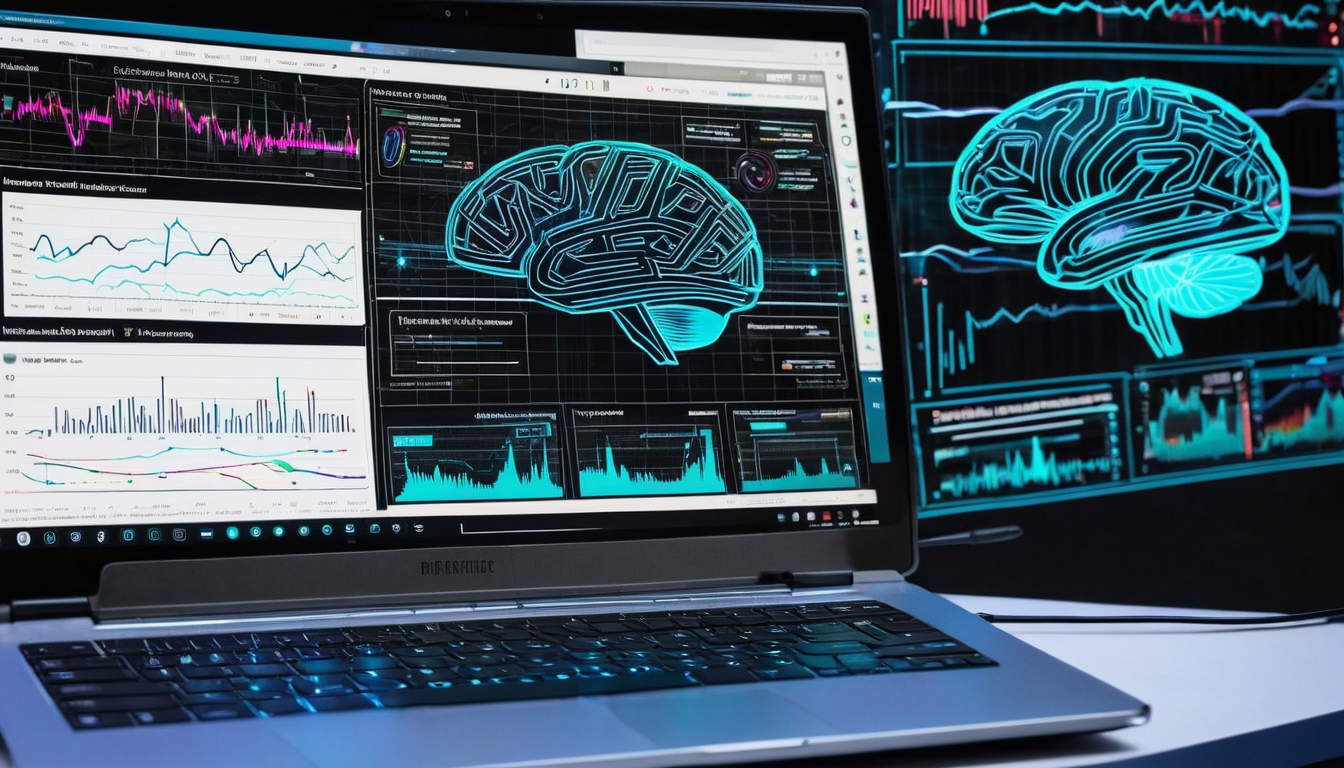
2. Natural Language Processing
Natural Language Processing (NLP) is a fascinating branch of artificial intelligence that focuses on the interaction between computers and humans through natural language. Imagine having a conversation with your computer, and it not only understands you but also responds just like a human would! This technology is designed to bridge the gap between human communication and machine understanding, making it a game-changer in various applications.
At its core, NLP involves several key processes that help machines comprehend and manipulate human language. These processes include:
- Tokenization: Breaking down text into smaller units, like words or phrases.
- Sentiment Analysis: Determining the emotional tone behind a series of words.
- Named Entity Recognition: Identifying and classifying key elements in text, such as names, dates, and locations.
- Language Translation: Converting text from one language to another.
The applications of NLP are vast and impactful. For instance, in customer service, chatbots powered by NLP can handle inquiries and provide support 24/7, improving response times and customer satisfaction. In social media, sentiment analysis tools help brands gauge public opinion on their products or campaigns by analyzing user comments and posts.
Moreover, NLP is also playing a crucial role in healthcare. By analyzing patient data and clinical notes, NLP can assist in diagnosing conditions and predicting patient outcomes. This not only enhances the efficiency of healthcare providers but also improves patient care.
| Application | Description |
|---|---|
| Chatbots | Automated systems that engage users in conversation. |
| Sentiment Analysis | Tools that evaluate emotions in text. |
| Language Translation | Services that convert text between languages. |
As we look to the future, the potential for Natural Language Processing is enormous. With advancements in machine learning and data processing, we can expect even more sophisticated applications that will continue to enhance our interactions with technology. So, next time you ask your virtual assistant a question, remember the incredible technology behind the scenes that makes it all possible!
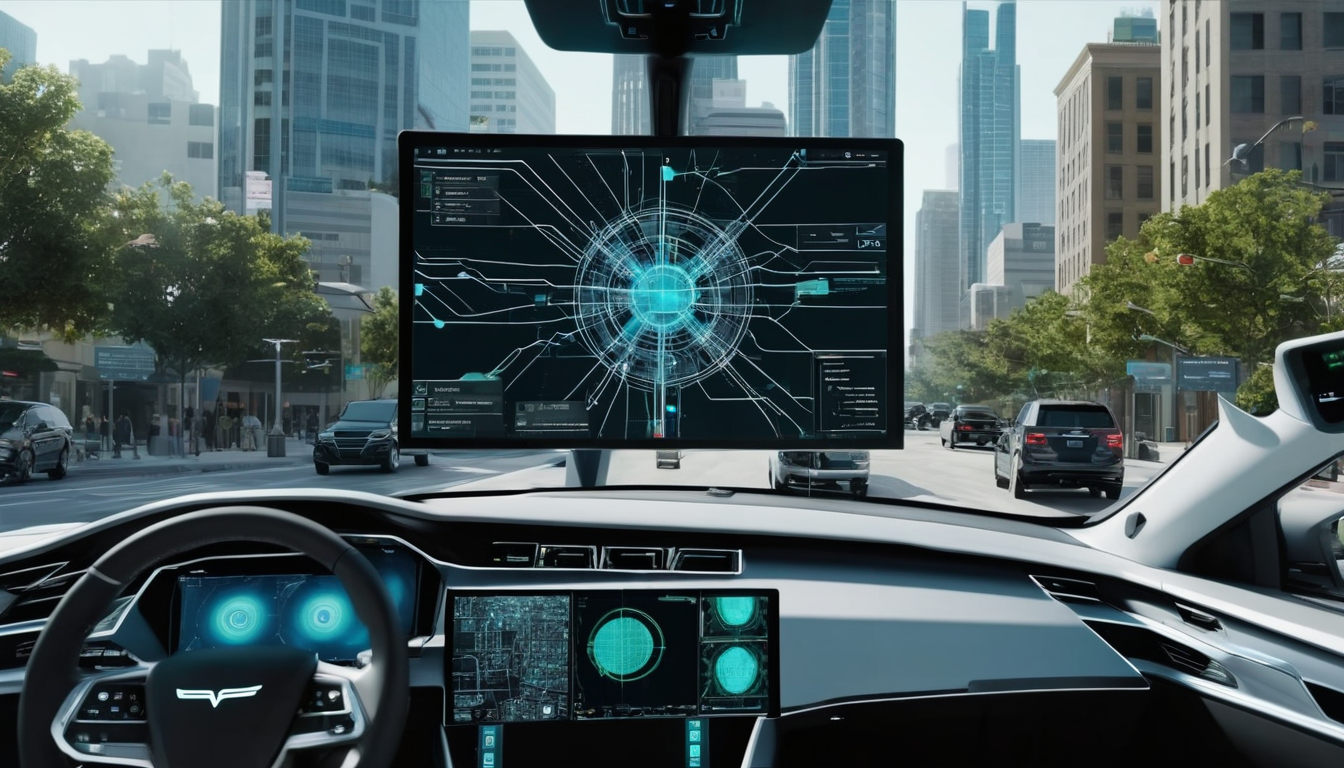
3. Computer Vision
Computer vision is an exciting field of artificial intelligence that empowers machines to interpret and understand visual information from the world around them. Imagine teaching a computer to see and comprehend images just like we do! This technology is not just about recognizing faces in photos; it’s about unlocking a treasure trove of possibilities across various industries.
At its core, computer vision involves the processing of visual data through algorithms that mimic human sight. It encompasses several key capabilities:
- Image Recognition: Identifying objects, people, or scenes within images.
- Facial Recognition: Analyzing facial features to verify identity.
- Object Detection: Locating and classifying multiple objects in an image.
- Image Segmentation: Dividing an image into segments to simplify analysis.
These capabilities are revolutionizing industries. For instance, in the automotive sector, computer vision is a critical component of autonomous vehicles. These vehicles utilize advanced algorithms to interpret their surroundings, making split-second decisions that enhance safety and efficiency. Similarly, in healthcare, computer vision aids in medical imaging, allowing for early detection of diseases through detailed analysis of scans.
| Application | Industry | Benefits |
|---|---|---|
| Facial Recognition | Security | Enhanced safety and identification |
| Object Detection | Retail | Improved inventory management |
| Medical Imaging | Healthcare | Early disease detection |
As we look to the future, the potential of computer vision seems limitless. With advancements in deep learning and neural networks, machines are becoming increasingly adept at understanding visual data. However, this rapid development raises important questions about ethics and privacy. How do we ensure that these powerful tools are used responsibly?
In conclusion, computer vision is not just a technological marvel; it’s a transformative force that is reshaping how we interact with the world. From enhancing security measures to improving healthcare diagnostics, the implications of this technology are profound and far-reaching.
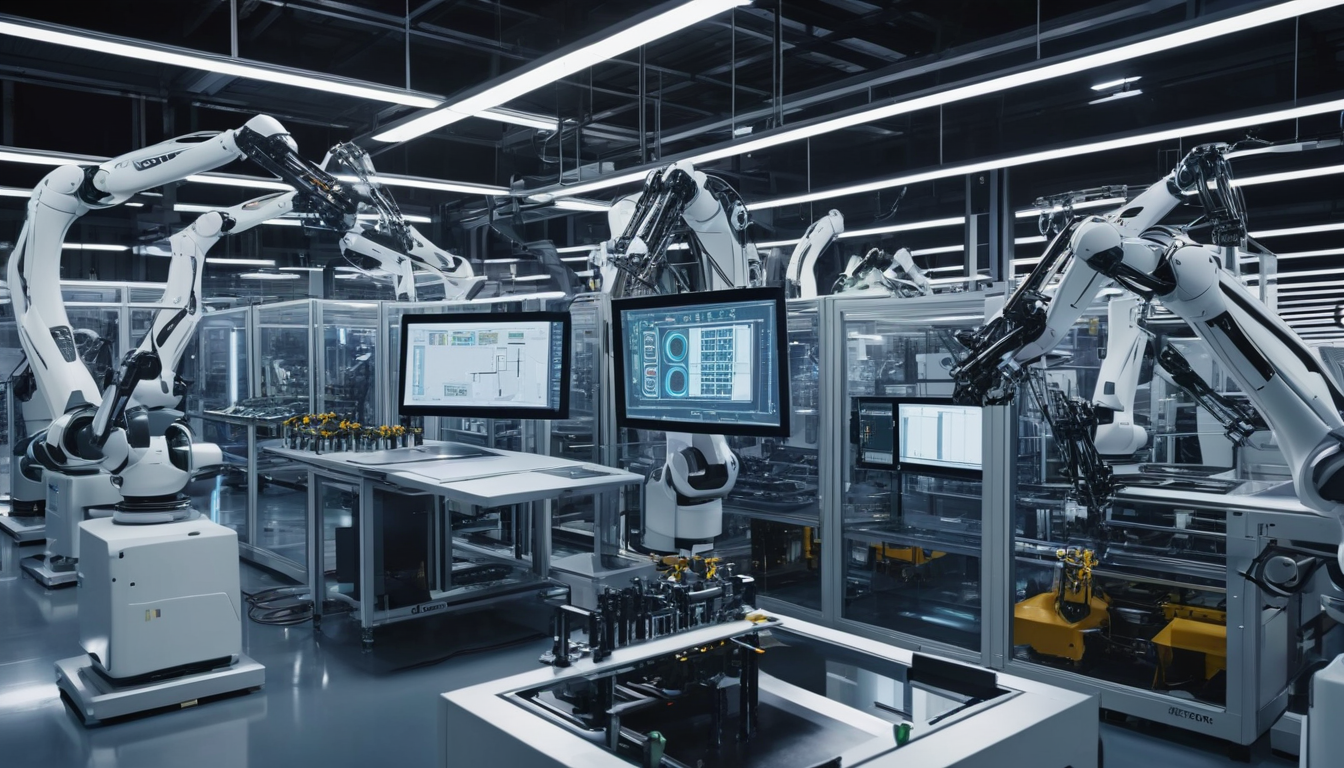
4. Robotics
Robotics is a fascinating field that combines engineering, computer science, and artificial intelligence to create machines capable of performing tasks that typically require human intelligence. Imagine a world where robots take on mundane chores, allowing us to focus on more creative endeavors! These intelligent machines are not just confined to factories; they are making their way into various sectors, revolutionizing how we live and work.
The applications of robotics are vast and varied. From manufacturing automation to surgical robots, the impact of robotics can be seen across numerous industries. For instance, in healthcare, robots assist surgeons by providing enhanced precision during complex procedures, thereby improving patient outcomes. In agriculture, robotic systems can monitor crop health and even harvest produce, making farming more efficient and sustainable.
Here’s a quick look at some key areas where robotics is making waves:
| Industry | Application |
|---|---|
| Manufacturing | Assembly line automation, quality control |
| Healthcare | Surgical assistance, rehabilitation |
| Agriculture | Crop monitoring, automated harvesting |
| Logistics | Warehouse automation, delivery drones |
As we move forward, the integration of AI in robotics is set to enhance their capabilities further. For example, robots equipped with machine learning algorithms can adapt to new tasks and environments, making them more versatile. This adaptability opens up exciting possibilities for future innovations.
To sum it up, robotics is not just about building machines; it’s about creating intelligent systems that can work alongside humans. The future promises even more advancements, making our lives easier and more efficient. So, are you ready to embrace a world where robots play a significant role in our daily routines?

5. Deep Learning
Deep Learning is a fascinating subset of machine learning that utilizes neural networks to analyze and interpret vast amounts of data. Imagine teaching a child to recognize animals by showing them countless pictures of cats and dogs; this is similar to how deep learning works, where systems learn from examples to improve their understanding over time. It excels at complex tasks such as image recognition, speech recognition, and even playing games like chess or Go, often outperforming human capabilities.
One of the reasons deep learning has gained immense popularity is its ability to automatically extract features from raw data without the need for manual feature engineering. This means that deep learning models can adapt and learn from new data, making them incredibly versatile across various applications. Here are some key areas where deep learning shines:
- Image Recognition: Identifying and classifying objects within images, widely used in social media and security.
- Natural Language Processing: Understanding and generating human language, essential for chatbots and virtual assistants.
- Healthcare: Assisting in diagnostics and personalized medicine by analyzing medical images and patient data.
To illustrate the impact of deep learning, consider the following table, which showcases some notable applications and their outcomes:
| Application | Description | Impact |
|---|---|---|
| Autonomous Vehicles | Uses deep learning for navigation and obstacle detection. | Reduces accidents and improves traffic efficiency. |
| Healthcare Diagnostics | Analyzes medical images for early disease detection. | Enhances patient outcomes and accelerates treatment. |
| Facial Recognition | Identifies individuals in images and videos. | Improves security measures and user experiences. |
As we look to the future, deep learning is poised to revolutionize numerous industries. The potential for innovation is staggering, and as data continues to grow, the capabilities of deep learning will only expand. It’s an exciting time to be involved in AI!

6. Reinforcement Learning
Reinforcement Learning (RL) is a fascinating area of artificial intelligence that mimics the way humans and animals learn through trial and error. Imagine a dog learning to fetch a ball; the more it fetches successfully, the more treats it gets. This is essentially how RL operates. In RL, an agent learns to make decisions by interacting with its environment, receiving rewards or penalties based on its actions, and adjusting its behavior accordingly. This dynamic learning process enables machines to develop strategies that optimize their performance over time.
One of the most exciting applications of reinforcement learning is in the field of game development. For instance, algorithms can learn to play complex games like chess or Go, often surpassing human champions. The key components of reinforcement learning include:
- Agent: The learner or decision maker.
- Environment: Everything the agent interacts with.
- Actions: The choices available to the agent.
- Rewards: Feedback from the environment based on actions taken.
- Policy: The strategy that the agent employs to determine its actions.
To illustrate the concept further, consider the following table that summarizes the key differences between traditional programming and reinforcement learning:
| Aspect | Traditional Programming | Reinforcement Learning |
|---|---|---|
| Learning Style | Predefined rules | Trial and error |
| Feedback | Static | Dynamic (rewards/penalties) |
| Adaptability | Limited | Highly adaptive |
The implications of reinforcement learning extend beyond games. In industries such as robotics, RL is being used to teach robots to perform complex tasks, from navigating obstacles to assembling products. As this technology continues to evolve, we can expect to see even more innovative applications that will change the way we interact with machines.

7. Expert Systems
Expert systems represent a fascinating branch of artificial intelligence, designed to emulate the decision-making capabilities of human experts. These systems are not just about crunching numbers; they are about applying knowledge to solve complex problems in various domains. Imagine having a virtual consultant at your fingertips, ready to provide insights based on a vast repository of information. This is the magic of expert systems!
At the heart of expert systems lies a knowledge base, which is essentially a collection of facts and rules about a specific domain. This knowledge is used to make inferences and reach conclusions. Typically, expert systems are employed in fields such as:
- Medicine – for diagnostic assistance
- Finance – for risk assessment and investment advice
- Manufacturing – for quality control and troubleshooting
The operation of an expert system can be broken down into a few key components:
| Component | Description |
|---|---|
| Knowledge Base | Stores domain-specific knowledge in the form of facts and rules. |
| Inference Engine | Applies logical rules to the knowledge base to derive new information or make decisions. |
| User Interface | Allows users to interact with the system, inputting data and receiving advice. |
The potential of expert systems is immense. They can process information at speeds far beyond human capabilities, making them invaluable in high-stakes environments. However, it’s important to consider the ethical implications of relying on these systems. Questions about accountability and transparency arise, especially when decisions impact lives, such as in healthcare or legal fields.
In conclusion, expert systems are a remarkable intersection of technology and human expertise. As they continue to evolve, they promise to enhance our decision-making processes and provide solutions to some of the most complex challenges we face today. Are you ready to embrace the future of intelligent decision-making?

8. Speech Recognition
Speech recognition technology has revolutionized the way we interact with machines, making it possible for them to understand and process spoken language. Imagine talking to your device as if it were a close friend, and surprisingly, it responds accurately! This technology is not just a novelty; it has found its way into various applications, from virtual assistants like Siri and Alexa to transcription services that convert speech into text. The ability to seamlessly convert spoken words into actionable data has made our lives easier and more efficient.
The underlying mechanics of speech recognition involve complex algorithms and neural networks that analyze sound waves, deciphering words and phrases. The beauty of this technology lies in its adaptability; it learns from user interactions, thereby improving its accuracy over time. For instance, when you use a voice command to set a reminder, the system learns your voice and speech patterns, which enhances its ability to understand you in the future.
Here’s a quick look at some of the key applications of speech recognition technology:
| Application | Description |
|---|---|
| Virtual Assistants | Devices that respond to voice commands, performing tasks like setting alarms or answering questions. |
| Transcription Services | Automated systems that convert spoken language into written text, useful in meetings and interviews. |
| Voice-Activated Devices | Smart home devices that can be controlled through voice commands, enhancing convenience. |
The impact of speech recognition extends to various sectors, including healthcare, where it assists in documenting patient records, and customer service, where chatbots utilize this technology to engage with clients effectively. As we look to the future, advancements in speech recognition will likely continue to enhance user experiences, making interactions with technology more natural and intuitive.
In conclusion, the evolution of speech recognition technology is a testament to how far we’ve come in bridging the gap between humans and machines. With ongoing innovations, who knows what the future holds? Perhaps one day, our devices will understand us even better than our closest friends!

9. Generative Adversarial Networks (GANs)
Generative Adversarial Networks (GANs) are one of the most exciting innovations in the field of artificial intelligence. They function by employing two neural networks—the generator and the discriminator—that compete against each other. This competition allows GANs to create new data that is remarkably similar to the training data. Imagine a painter who learns to create masterpieces by studying the works of the greats; that’s essentially what GANs do with data!
The generator produces new data instances, while the discriminator evaluates them. The generator aims to create data that is indistinguishable from the real data, while the discriminator’s job is to tell the difference between the generated data and the actual data. This back-and-forth continues until the generator produces data that the discriminator can no longer accurately differentiate. The applications of GANs span various fields, including:
- Image Generation
- Video Generation
- Art Creation
- Text-to-Image Synthesis
One of the most striking examples of GANs in action is in the world of artificial art generation. Artists and technologists have collaborated to create stunning pieces that blur the lines between human creativity and machine learning. For instance, GANs can generate realistic images of faces that do not belong to any real person, showcasing their ability to learn intricate details and patterns from existing datasets.
To illustrate the impact of GANs, consider the following table that summarizes their advantages and applications:
| Advantages of GANs | Applications |
|---|---|
| High-quality data generation | Image and video synthesis |
| Ability to generate new data | Super-resolution imaging |
| Improves existing datasets | Medical imaging |
As we look to the future, GANs hold immense potential in various domains, from creating realistic virtual environments for gaming to improving data privacy by generating synthetic datasets. The possibilities are truly endless, and as technology continues to evolve, so will the capabilities of Generative Adversarial Networks.
In summary, GANs are not just a technological novelty; they represent a significant leap in how machines can understand and replicate human creativity. Just as a sculptor chisels away at a block of marble to reveal a masterpiece, GANs are carving out new frontiers in the world of artificial intelligence.

10. Predictive Analytics
Predictive analytics is a powerful tool that harnesses the potential of data analysis to forecast future events based on historical data. Imagine having a crystal ball that not only tells you what might happen next but also guides you on how to prepare for it. This technology is widely utilized across various industries, from marketing to healthcare, helping organizations make informed decisions and optimize their strategies.
At its core, predictive analytics employs statistical algorithms and machine learning techniques to identify patterns and trends in data. By analyzing past behaviors, businesses can anticipate future outcomes, which is invaluable for planning and resource allocation. For instance, in retail, companies can predict customer buying behavior, enabling them to tailor their marketing efforts and manage inventory more effectively.
| Industry | Application of Predictive Analytics |
|---|---|
| Healthcare | Predicting patient readmission rates and optimizing treatment plans. |
| Finance | Fraud detection and risk assessment for loans. |
| Marketing | Customer segmentation and personalized marketing strategies. |
| Manufacturing | Predictive maintenance to reduce downtime and optimize production. |
Moreover, the applications of predictive analytics are not limited to just one sector. Here are some key areas where this technology shines:
- Customer Insights: Understanding customer preferences and behaviors to enhance satisfaction.
- Risk Management: Identifying potential risks before they become critical issues.
- Operational Efficiency: Streamlining processes to save time and resources.
In conclusion, the future of predictive analytics is bright. As technology continues to evolve, we can expect even more sophisticated algorithms and tools that will enhance our ability to predict outcomes. This will not only improve business performance but also enable organizations to respond proactively to changes in their environment. As the saying goes, “The best way to predict the future is to create it,” and with predictive analytics, businesses are well on their way to doing just that.
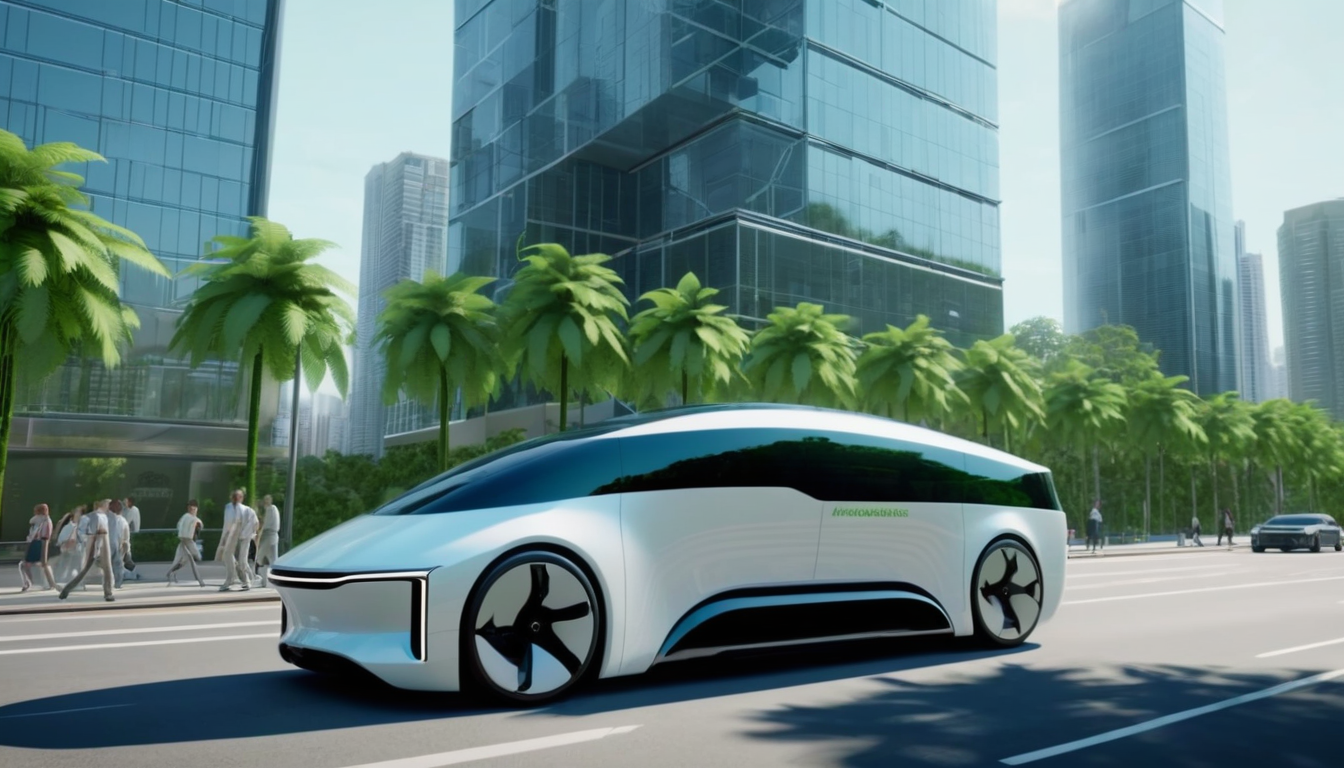
11. Autonomous Vehicles
Autonomous vehicles, often referred to as self-driving cars, represent a remarkable fusion of technology and innovation. These vehicles leverage a combination of artificial intelligence, computer vision, and sophisticated algorithms to navigate roads without human intervention. Imagine a world where your car could drive you to work while you catch up on your favorite show—sounds like something out of a sci-fi movie, right? Well, it’s becoming a reality!
The technology behind autonomous vehicles is continually evolving, making them safer and more efficient. These vehicles are equipped with numerous sensors, cameras, and radar systems that allow them to perceive their environment. They can detect obstacles, recognize traffic signals, and even predict the behavior of pedestrians. This level of awareness is crucial for ensuring the safety of both the passengers and those around them.
Here’s a quick overview of the key components that make autonomous vehicles tick:
| Component | Function |
|---|---|
| Sensors | Collect data about the vehicle’s surroundings |
| AI Algorithms | Process data and make driving decisions |
| Actuators | Control the vehicle’s movements |
The potential applications for autonomous vehicles are vast and varied. From reducing traffic congestion to minimizing accidents caused by human error, the benefits are compelling. Some of the most exciting applications include:
- Ridesharing Services: Imagine hopping into a self-driving car that takes you anywhere you need to go without the hassle of a driver.
- Delivery Services: Companies are exploring the use of autonomous vehicles for delivering packages directly to your doorstep.
- Public Transportation: Autonomous buses and shuttles could revolutionize urban mobility, making it more efficient and accessible.
As we look to the future, it’s clear that autonomous vehicles will play a significant role in shaping our transportation landscape. With ongoing advancements in technology and increasing investment in research, we are on the brink of a new era in mobility. So, buckle up; the ride is just beginning!

12. Image Recognition
Image recognition technology is a revolutionary advancement in the field of artificial intelligence, enabling machines to identify and classify objects within images. This capability has transformed numerous industries by enhancing automation and improving operational efficiency. Imagine a world where your smartphone recognizes your friends’ faces, or where security systems can detect intruders in real-time. The possibilities are endless!
At its core, image recognition relies on complex algorithms and machine learning techniques that analyze visual data. These systems are trained using vast datasets, allowing them to learn from examples and improve their accuracy over time. As they process more images, they become adept at recognizing patterns, shapes, and features that define various objects.
Some of the most common applications of image recognition include:
- Security and Surveillance: Monitoring systems can automatically identify suspicious activities or individuals.
- Retail: Stores use image recognition for inventory management and customer engagement.
- Social Media: Platforms like Facebook utilize this technology to tag friends in photos.
- Healthcare: Medical imaging analysis aids in diagnosing diseases by identifying abnormalities.
To illustrate the impact of image recognition, consider the following table that highlights its applications across different sectors:
| Industry | Application |
|---|---|
| Security | Facial recognition for surveillance |
| Retail | Product recognition for inventory |
| Healthcare | Identifying tumors in scans |
| Automotive | Obstacle detection in self-driving cars |
As image recognition continues to evolve, it raises important questions about privacy and ethical considerations. How do we balance the benefits of this technology with the need for individual privacy? The future will require careful navigation of these complexities to ensure responsible use.
In summary, image recognition is not just a technological marvel; it’s a tool that has the potential to reshape how we interact with the world around us. As we continue to innovate, the applications of this technology will only expand, paving the way for smarter solutions across various industries.
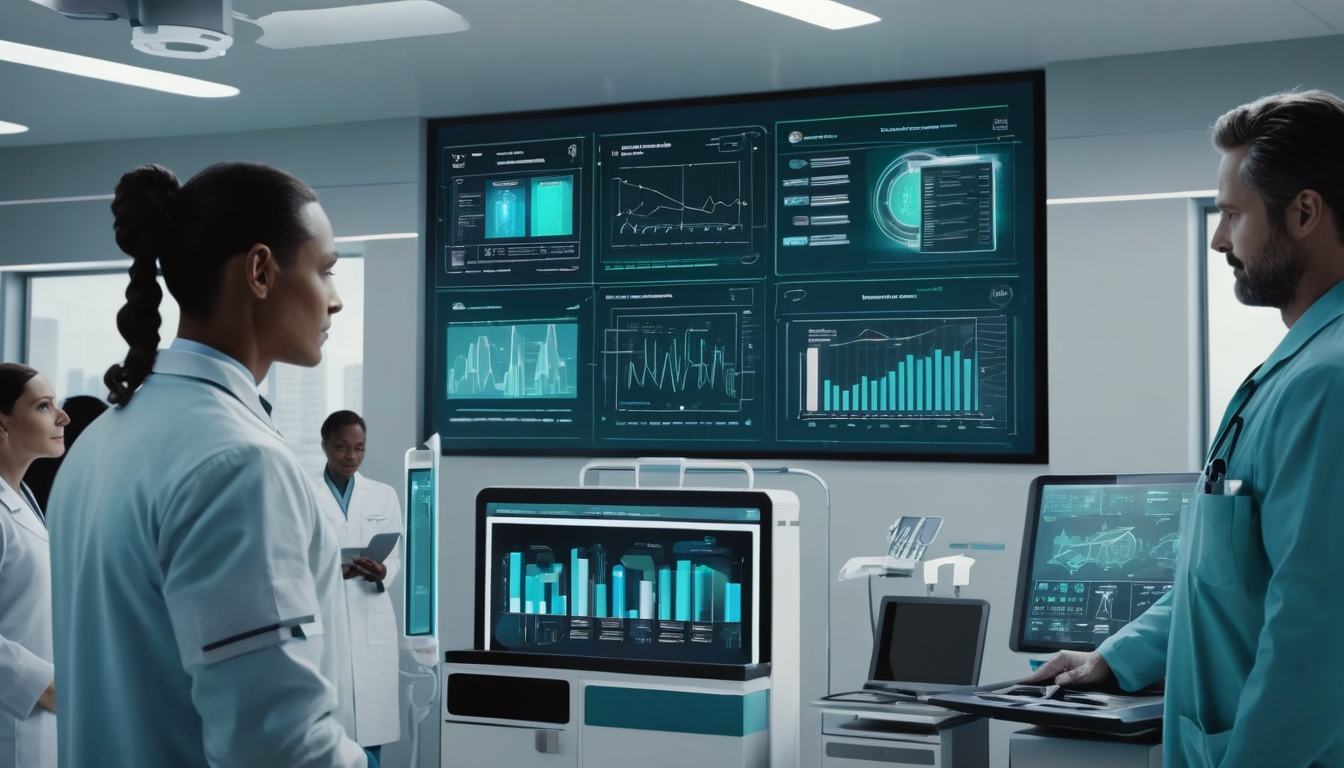
13. AI in Healthcare
Artificial Intelligence (AI) is revolutionizing the healthcare industry in ways we could only dream of a few years ago. Imagine a world where machines can analyze complex medical data faster than any human doctor, providing insights that lead to better patient outcomes. AI technologies are playing a crucial role in various aspects of healthcare, enhancing the way we diagnose, treat, and manage diseases. From predictive analytics to personalized medicine, AI is not just a tool; it’s a game changer.
One of the most significant applications of AI in healthcare is in predictive analytics. By analyzing vast amounts of historical data, AI can help healthcare providers predict patient outcomes, identify potential health risks, and optimize treatment plans. This proactive approach not only saves lives but also reduces healthcare costs. For instance, AI algorithms can analyze patient records to forecast complications in chronic diseases, allowing for timely interventions.
Another exciting development is the use of AI in diagnostic tools. Advanced algorithms can process medical images, such as X-rays and MRIs, with remarkable accuracy. For example, a recent study found that AI systems can detect certain types of cancers more accurately than human radiologists. This not only speeds up the diagnostic process but also improves the precision of diagnoses, leading to earlier and more effective treatments.
| AI Applications in Healthcare | Benefits |
|---|---|
| Predictive Analytics | Identifies health risks and optimizes treatment plans |
| Diagnostic Tools | Enhances accuracy in detecting diseases |
| Personalized Medicine | Tailors treatments to individual patient needs |
| Robotic Surgery | Increases precision and reduces recovery time |
Moreover, AI is making strides in personalized medicine, allowing treatments to be tailored to the unique genetic makeup of each patient. This means medications can be more effective, with fewer side effects. As healthcare continues to evolve, the integration of AI technologies promises to enhance not only the efficiency of healthcare systems but also the overall experience for patients.
In conclusion, the future of AI in healthcare looks incredibly bright. With ongoing advancements, we can expect even more innovative solutions that will improve patient care and transform the healthcare landscape. As we embrace these technologies, the question remains: how far can AI take us in our quest for better health?

14. Chatbots
Chatbots are revolutionizing the way businesses interact with their customers. These AI-driven conversational agents use Natural Language Processing (NLP) and machine learning to engage users in real-time, providing instant support and automating repetitive tasks. Imagine having a friendly assistant available 24/7, ready to answer questions, resolve issues, and even make recommendations. That’s the magic of chatbots!
One of the most significant advantages of chatbots is their ability to enhance customer experience. They can handle a multitude of inquiries simultaneously, ensuring that no customer feels neglected. Here are some key benefits:
- Instant Response: Chatbots provide immediate answers, reducing wait times for customers.
- Cost Efficiency: Automating customer service tasks can significantly lower operational costs.
- Data Collection: They can gather valuable insights about customer preferences and behavior.
As businesses continue to adopt chatbots, it’s essential to consider their design and functionality. A well-designed chatbot should not only be able to understand and respond to user queries but also deliver a seamless and engaging experience. This involves creating a personality for the chatbot that aligns with the brand’s voice and values. For example, a financial institution may choose a more formal tone, while a retail brand may opt for a casual and friendly approach.
Here’s a quick comparison of different types of chatbots:
| Type of Chatbot | Description | Best Use Cases |
|---|---|---|
| Rule-Based | Follows predefined rules and scripts. | Simple FAQs and guided support. |
| AI-Powered | Uses machine learning to understand and respond. | Complex inquiries and personalized interactions. |
| Voice-Activated | Interacts through voice commands. | Virtual assistants and hands-free environments. |
In conclusion, chatbots are not just a passing trend; they are a vital component of modern customer service strategies. As technology advances, we can expect chatbots to become even more sophisticated, making interactions feel more human-like and intuitive. Are you ready to embrace the chatbot revolution?
“Chatbots are the future of customer service; they are here to stay and evolve.”
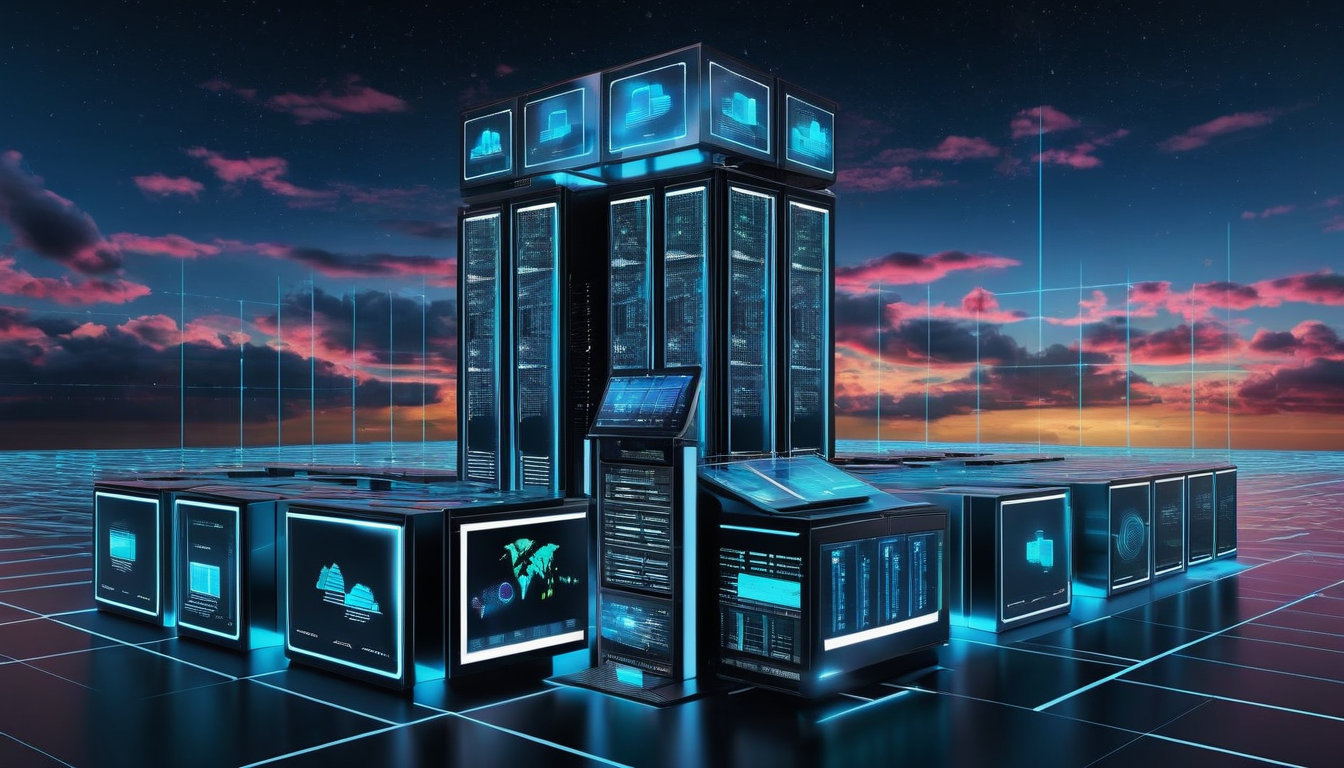
15. Cloud AI Services
In today’s fast-paced digital landscape, Cloud AI Services are emerging as a game-changer for businesses of all sizes. These services allow organizations to harness the power of artificial intelligence without the need for extensive hardware investments. Imagine being able to access sophisticated AI tools from anywhere, at any time, just like streaming your favorite movie! This flexibility not only enhances productivity but also democratizes access to advanced technologies, enabling small startups to compete with industry giants.
The rise of Cloud AI Services has led to a significant transformation in various sectors. Companies can now leverage these services for tasks such as data analysis, machine learning, and natural language processing. For instance, businesses can utilize cloud-based AI to analyze customer behavior and tailor marketing strategies accordingly. This is akin to having a personal assistant who knows your preferences and helps you make better decisions!
Here’s a quick overview of some key benefits of Cloud AI Services:
- Scalability: Easily scale your AI resources based on demand.
- Cost-Effectiveness: Reduce the need for expensive hardware and maintenance.
- Accessibility: Access AI tools from anywhere with an internet connection.
- Collaboration: Enhance teamwork by sharing AI resources across departments.
To illustrate the impact of Cloud AI Services, consider the following table that highlights some popular providers and their offerings:
| Provider | Key Features | Use Cases |
|---|---|---|
| Amazon Web Services (AWS) | Machine Learning, Data Analytics | Recommendation Engines, Fraud Detection |
| Google Cloud AI | Natural Language Processing, Vision AI | Chatbots, Image Recognition |
| Microsoft Azure | Predictive Analytics, Cognitive Services | Customer Insights, Speech Recognition |
As we continue to explore the potential of Cloud AI Services, it’s essential to consider the ethical implications. Ensuring fairness and transparency in AI algorithms is crucial for building trust with users. As we navigate this exciting frontier, let’s remember that the goal is not just to advance technology but to enhance human capabilities and improve lives.
In conclusion, Cloud AI Services are not just a trend; they are reshaping the way we do business. By embracing these technologies, companies can unlock new opportunities and stay ahead in the competitive landscape. So, are you ready to take your business to the cloud?
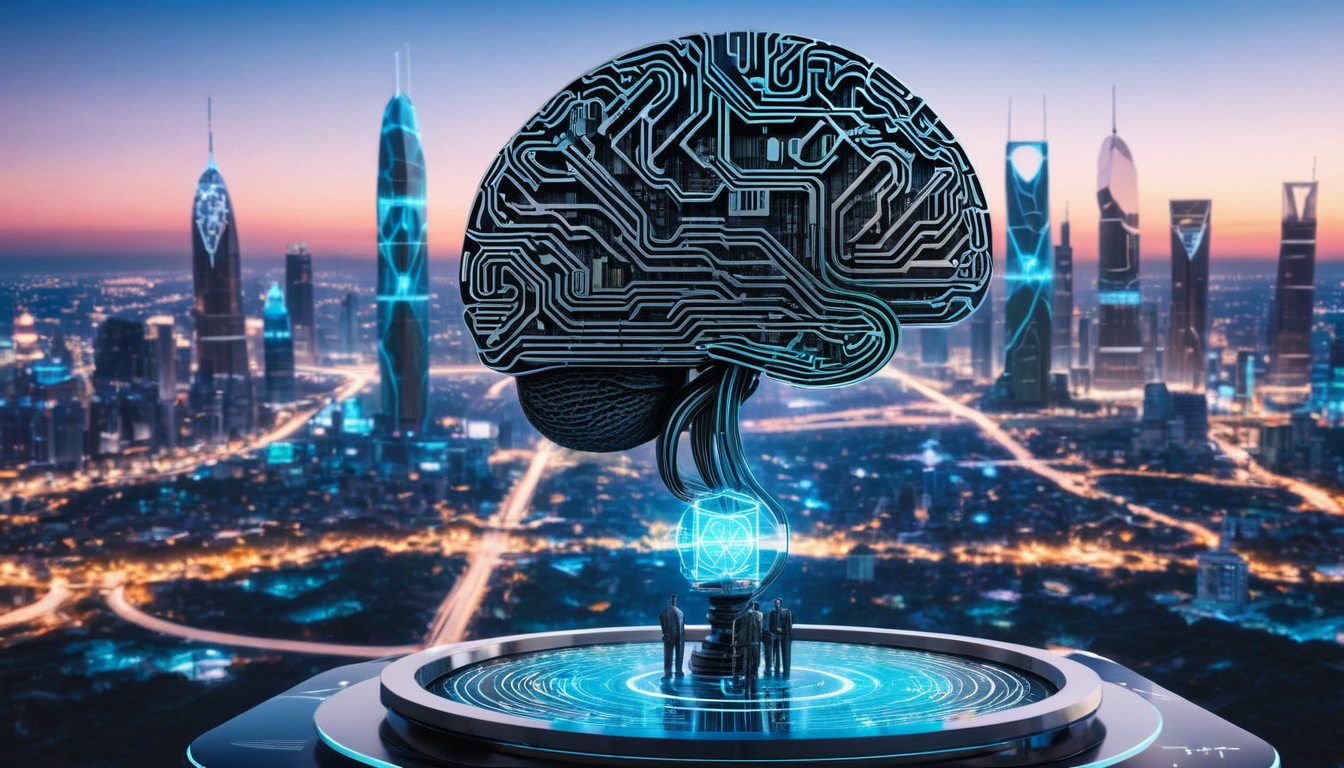
16. AI Ethics
The rapid evolution of artificial intelligence (AI) technologies has sparked a crucial conversation about AI ethics. As machines become increasingly capable of making decisions that affect human lives, it is imperative to address the moral implications of these technologies. The field of AI ethics focuses on ensuring that AI systems are developed and deployed responsibly, emphasizing principles such as fairness, accountability, and transparency.
One of the key concerns in AI ethics is the potential for bias in AI algorithms. If the data used to train these systems is biased, the outcomes can perpetuate stereotypes and inequalities. For instance, facial recognition systems have been shown to perform poorly on individuals with darker skin tones, leading to significant ethical dilemmas. Therefore, it is essential for developers to actively work towards eliminating bias in AI technologies.
Moreover, accountability in AI systems is vital. When an AI makes a mistake, who is responsible? This question is at the heart of AI ethics discussions. Establishing clear guidelines and frameworks can help ensure that developers and organizations are held accountable for the impacts of their AI systems. Here are some critical points to consider:
- Transparency: AI systems should be understandable and explainable to users.
- Fairness: AI should be designed to treat all individuals equitably, without discrimination.
- Accountability: Developers must be responsible for their AI’s decisions and outcomes.
Furthermore, the implications of AI ethics extend to various sectors, including healthcare, finance, and law enforcement. For example, in healthcare, AI can assist in diagnosing diseases, but ethical considerations arise regarding patient privacy and consent. In finance, algorithmic trading can lead to market manipulation if not properly regulated. Thus, it is crucial to develop ethical guidelines tailored to specific industries.
In conclusion, as we continue to integrate AI technologies into our daily lives, addressing AI ethics is not just an option; it is a necessity. By prioritizing fairness, accountability, and transparency, we can harness the full potential of AI while safeguarding human values and rights.
| Key Principles of AI Ethics | Description |
|---|---|
| Transparency | Ensuring AI systems are understandable and explainable. |
| Fairness | Designing AI to treat all individuals equitably. |
| Accountability | Holding developers responsible for AI decisions and outcomes. |
“The real test of AI ethics lies in our commitment to uphold human dignity and rights as we advance these technologies.”

17. AI in Finance
Artificial Intelligence (AI) is revolutionizing the finance sector in ways that were once thought to be the realm of science fiction. From algorithmic trading to fraud detection, AI technologies are enhancing efficiency and security in financial operations. Imagine having a smart assistant that can analyze market trends in real-time, making split-second decisions that could potentially save or earn millions. This is not just a dream; it’s happening right now!
One of the most exciting applications of AI in finance is algorithmic trading. These AI-driven systems can process vast amounts of data at lightning speed, allowing them to identify trading opportunities that human traders might miss. According to a recent report, over 60% of trades on major exchanges are now executed by algorithms. This shift not only increases efficiency but also reduces the emotional biases that can lead to poor investment decisions.
Another critical area where AI shines is in fraud detection. Financial institutions are employing machine learning algorithms to analyze transaction patterns and identify anomalies that could indicate fraudulent activity. This proactive approach significantly reduces the risk of financial loss and enhances customer trust.
To give you a clearer picture, here’s a quick comparison of traditional vs. AI-enhanced fraud detection:
| Aspect | Traditional Methods | AI-Enhanced Methods |
|---|---|---|
| Speed | Slower, manual reviews | Real-time analysis |
| Accuracy | Higher false positives | Lower false positives |
| Adaptability | Static rules | Self-learning algorithms |
Moreover, AI is also changing how personalized financial advice is delivered. Robo-advisors, powered by AI, can assess an individual’s financial situation and goals, offering tailored investment strategies at a fraction of the cost of traditional advisors. This democratizes access to financial planning, making it available to a broader audience.
In summary, the integration of AI in the finance sector is not just a trend; it’s a transformative movement that is reshaping how we manage money. As we look to the future, we can anticipate even more innovative applications of AI that will further enhance the financial landscape. So, are you ready to embrace the future of finance?
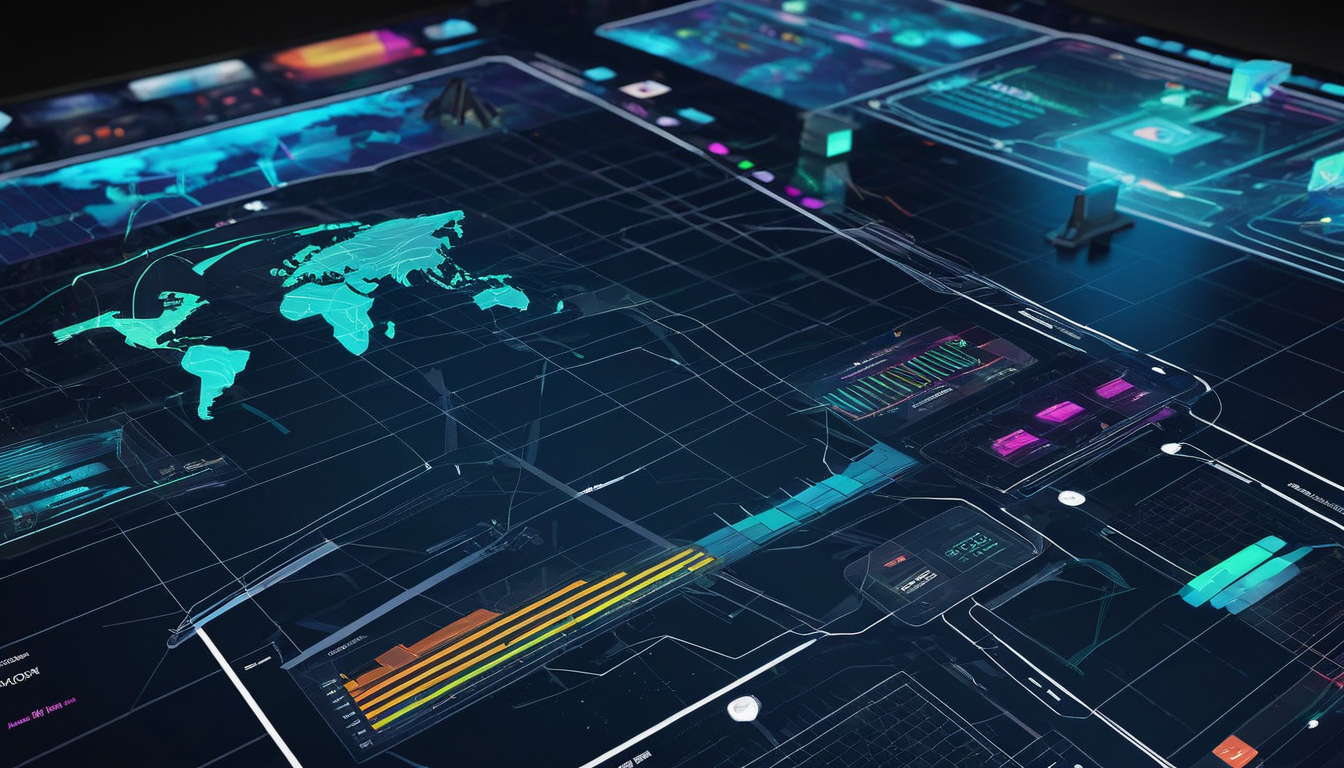
18. Emotion AI
Emotion AI, also known as affective computing, is a fascinating branch of artificial intelligence that focuses on enabling machines to recognize and respond to human emotions. This technology is transforming the way we interact with devices, making them more intuitive and responsive to our feelings. Imagine chatting with a virtual assistant that can not only understand your words but also gauge your emotional state and adjust its responses accordingly. Isn’t that incredible?
The applications of Emotion AI are vast and varied. From enhancing user experiences in gaming to improving customer service interactions, the potential is huge. For instance, in gaming, Emotion AI can analyze players’ facial expressions and adjust game difficulty or narrative based on their emotional engagement. In customer service, it can help agents understand when a customer is frustrated and respond with empathy.
Here are some key areas where Emotion AI is making an impact:
- Gaming: Adapting gameplay based on player emotions.
- Customer Service: Enhancing interactions by recognizing customer emotions.
- Marketing: Tailoring advertisements to resonate emotionally with audiences.
To better understand the impact of Emotion AI, let’s look at a simple table that highlights its applications:
| Application Area | Impact |
|---|---|
| Gaming | Personalized experiences based on emotional feedback. |
| Healthcare | Improved patient interactions through emotional awareness. |
| Education | Adaptive learning environments that respond to students’ emotions. |
As we continue to explore the capabilities of Emotion AI, it’s crucial to consider the ethical implications of this technology. How do we ensure that machines respect our privacy and emotional data? This question is at the forefront of discussions surrounding the development of Emotion AI. As we embrace these advancements, we must also navigate the challenges they present.
In conclusion, the potential of Emotion AI to enhance human-computer interactions is immense. By understanding and responding to our emotions, machines can create more engaging and supportive environments. The future of this technology is bright, and it promises to reshape not just how we interact with devices, but also how we connect with one another.

19. Quantum Computing and AI
Quantum computing is a groundbreaking technology that has the potential to revolutionize the field of artificial intelligence (AI). Unlike classical computers that process information in bits (0s and 1s), quantum computers utilize quantum bits or qubits. This unique feature allows them to perform complex calculations at astonishing speeds, making them a game-changer for AI applications. Imagine a world where AI can analyze vast datasets in mere seconds, uncovering insights that would take traditional computers years to discover!
The synergy between quantum computing and AI can lead to remarkable advancements in various sectors. For instance, in healthcare, quantum algorithms could enhance drug discovery processes by simulating molecular interactions more accurately. In finance, they could optimize trading strategies by analyzing market trends with unprecedented precision. The implications are vast and exciting!
Here are some key areas where quantum computing can significantly enhance AI capabilities:
- Speed: Quantum computers can process information exponentially faster than classical computers.
- Complex Problem Solving: They can tackle problems that are currently unsolvable, such as complex simulations and optimizations.
- Data Analysis: Quantum algorithms can analyze large datasets more efficiently, leading to better decision-making.
To illustrate the impact of quantum computing on AI, consider the following table that highlights potential applications and their benefits:
| Application | Benefit |
|---|---|
| Drug Discovery | Accelerated research and development of new medications. |
| Financial Modeling | Improved risk analysis and investment strategies. |
| Supply Chain Optimization | Enhanced efficiency and reduced costs in logistics. |
As we look to the future, the integration of quantum computing with AI is not just a possibility; it’s an impending reality. The potential for innovation is immense, and as researchers continue to explore this exciting frontier, we can expect to see groundbreaking developments that will transform industries and improve our daily lives. Are you ready to embrace the future of technology?

20. AI for Cybersecurity
In today’s digital landscape, where cyber threats are evolving at a breakneck pace, AI for cybersecurity has emerged as a game-changer. Imagine having a vigilant guardian that never sleeps, always on the lookout for potential threats. That’s what AI brings to the table—enhanced security measures that learn and adapt in real-time. With the ability to process vast amounts of data, AI can identify anomalies and potential threats much faster than traditional methods. This not only helps in preventing breaches but also in mitigating damage when incidents occur.
AI technologies are increasingly being integrated into cybersecurity protocols, providing organizations with tools that enhance their defensive capabilities. For instance, machine learning algorithms can analyze patterns of behavior across networks to detect unusual activity that could signify a breach. Moreover, AI can automate responses to certain types of threats, allowing human analysts to focus on more complex issues.
Here are some key benefits of utilizing AI for cybersecurity:
- Real-time threat detection: AI systems can analyze data continuously, spotting potential threats as they arise.
- Automated responses: Immediate action can be taken against threats, reducing response times significantly.
- Enhanced accuracy: AI reduces false positives, ensuring that human analysts can concentrate on genuine threats.
To further illustrate the impact of AI on cybersecurity, consider the following table that outlines various AI applications and their functionalities:
| AI Application | Functionality |
|---|---|
| Intrusion Detection Systems | Monitor network traffic for suspicious activity. |
| Behavioral Analytics | Detect deviations from normal user behavior. |
| Threat Intelligence Platforms | Aggregate data from various sources to predict potential attacks. |
As we move forward, the role of AI in cybersecurity will only grow. Organizations must embrace these technologies not just as tools but as essential partners in the fight against cybercrime. After all, in a world where threats are constantly evolving, staying one step ahead is not just an advantage—it’s a necessity. As the famous saying goes, “An ounce of prevention is worth a pound of cure,” and AI offers that ounce in the realm of cybersecurity.
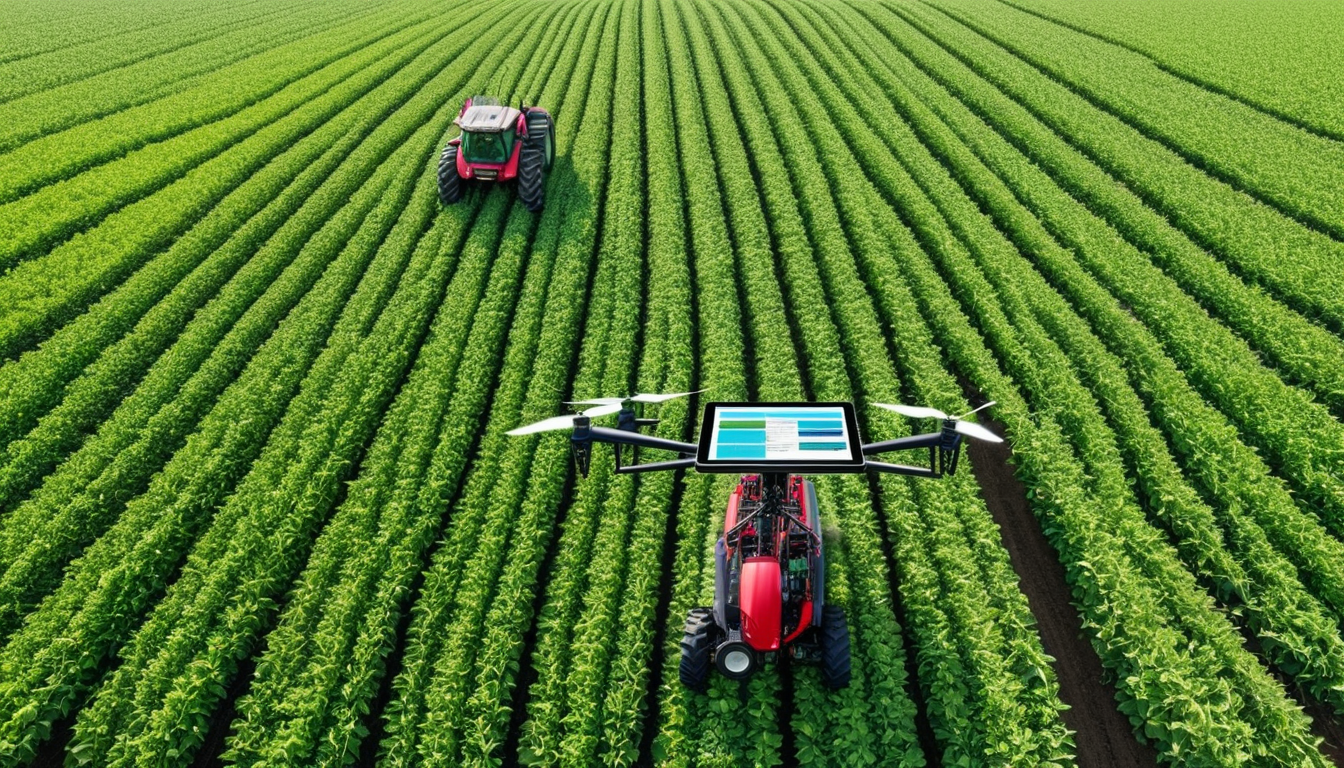
21. AI in Agriculture
Artificial Intelligence is making significant waves in the agriculture sector, transforming traditional farming practices into more efficient, data-driven processes. Imagine a world where farmers can predict crop yields with incredible accuracy, monitor soil health in real-time, and even automate irrigation systems—all thanks to AI technologies. These advancements not only enhance productivity but also promote sustainable farming practices that are vital for our planet’s future.
One of the most exciting applications of AI in agriculture is through precision farming. This approach utilizes AI algorithms to analyze data collected from various sources, including satellite imagery and IoT devices. By doing so, farmers can make informed decisions about when to plant, irrigate, and harvest crops. The result? Increased yields and reduced waste. For instance, AI can help farmers determine the optimal amount of water needed for specific crops, minimizing water usage while maximizing growth.
In addition to precision farming, AI technologies also play a crucial role in crop monitoring. Drones equipped with AI-powered cameras can survey vast fields, identifying areas that require attention. This capability allows farmers to quickly address issues such as pest infestations or nutrient deficiencies, preventing potential losses. According to a recent study, farms that implement AI-driven monitoring systems have seen up to a 30% increase in crop health and yield.
To illustrate the impact of AI in agriculture, consider the following table that summarizes key benefits:
| Benefit | Description |
|---|---|
| Increased Efficiency | AI automates routine tasks, allowing farmers to focus on strategic decisions. |
| Cost Reduction | Smart resource management leads to lower operational costs. |
| Enhanced Sustainability | AI promotes sustainable practices that conserve resources and reduce waste. |
In conclusion, the integration of AI in agriculture is not just a trend; it is a revolution that is reshaping how we approach food production. As we face the challenges of a growing population and climate change, leveraging AI technologies will be essential in ensuring food security and sustainability for future generations. Are you ready to embrace the future of farming?
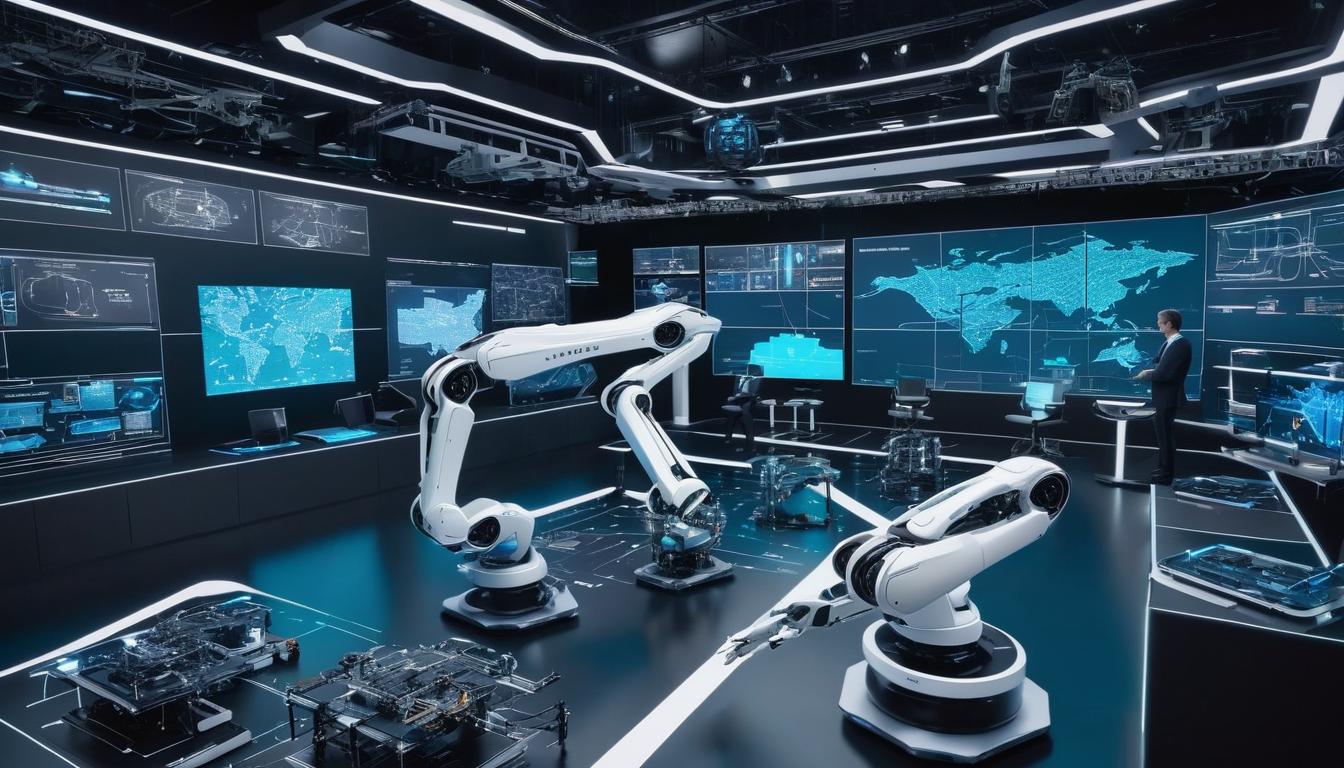
22. The Future of AI Technologies
The future of AI technologies is not just bright; it’s blazing with potential! As we look ahead, we can expect a whirlwind of advancements that will reshape industries and redefine human capabilities. Imagine a world where machines not only assist us but also enhance our decision-making processes and creativity. Isn’t that exciting?
One of the most promising areas is the integration of AI with quantum computing. This combination could lead to breakthroughs in how we process information, allowing us to tackle problems that are currently beyond our reach. For instance, complex simulations and optimizations in fields like drug discovery or climate modeling could become a reality.
Moreover, the ethical implications of AI will become increasingly significant. As AI continues to permeate our daily lives, ensuring that these technologies are developed and used responsibly will be paramount. Companies and governments will need to prioritize AI ethics, focusing on fairness, accountability, and transparency. This could lead to the establishment of robust frameworks that govern AI usage, ensuring it benefits society as a whole.
Here’s a quick look at some key areas where AI is expected to make waves in the future:
- Healthcare: AI will continue to revolutionize diagnostics and personalized treatment plans.
- Transportation: Expect more advancements in autonomous vehicles, making travel safer and more efficient.
- Education: Tailored learning experiences powered by AI will enhance student engagement and outcomes.
To illustrate the potential impact of these advancements, take a look at the following table:
| Area of Impact | Expected Changes |
|---|---|
| Healthcare | Enhanced diagnostics and treatment personalization |
| Transportation | Improved safety and efficiency in travel |
| Education | Customized learning experiences for students |
In conclusion, the future of AI technologies is filled with exhilarating possibilities. As we harness these advancements, we must also remain vigilant about the ethical considerations that come with them. After all, the goal is not just to advance technology but to enhance the human experience in a meaningful way.
“The best way to predict the future is to invent it.” – Alan Kay
Frequently Asked Questions
- What is artificial intelligence (AI)?Artificial intelligence (AI) refers to the simulation of human intelligence in machines. These machines are designed to think and learn like humans, performing tasks such as problem-solving, decision-making, and language understanding.
- How does machine learning work?Machine learning is a subset of AI that allows systems to learn from data. It uses algorithms to identify patterns and make predictions, improving its performance over time without being explicitly programmed.
- What are some common applications of natural language processing?Natural language processing (NLP) is used in various applications, including chatbots, virtual assistants like Siri and Alexa, sentiment analysis tools, and language translation services, making interactions with machines more intuitive.
- What is the role of AI in healthcare?AI is transforming healthcare by enhancing diagnostic accuracy, personalizing treatment plans, and predicting patient outcomes. Technologies like predictive analytics and machine learning help improve operational efficiency in medical settings.
- Are there ethical concerns surrounding AI?Yes, AI ethics is a significant concern. Issues like bias in algorithms, data privacy, and accountability in AI decision-making are critical topics that need to be addressed to ensure responsible development and deployment of AI technologies.
- What is the future of AI technologies?The future of AI technologies looks promising, with ongoing advancements expected to reshape various industries. As AI continues to evolve, it will likely enhance human capabilities and tackle global challenges more effectively.

